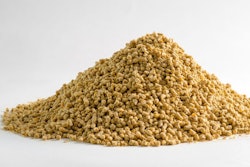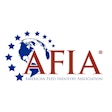Priorities defined and research proposals requested
The Swine Health Information Center (SHIC), along with the Foundation for Food and Agriculture Research (FFAR), a nonprofit organization established in the 2014 Farm Bill to build public-private partnerships that fund bold research addressing big food and agriculture challenges, and Pork Checkoff, joined together to fund a Wean-to-Harvest Biosecurity Program to be implemented over the next two years.
Phase 1 involved identifying subject matter experts and assembling task forces with the responsibility of establishing research priorities. Now in Phase 2, SHIC, FFAR, and Pork Checkoff are soliciting proposals to investigate cost-effective, innovative technologies, protocols or ideas to implement biosecurity during the wean-to-harvest phase of production. Proactively enhancing wean-to-harvest biosecurity will help control the next emerging disease in the U.S. pork industry and improve U.S. swine herd health, all part of SHIC’s mission including analysis of swine health data and targeted research to benefit the U.S. pork industry.
Priorities for the research proposals reflect input from key industry stakeholders recruited to join the SHIC Wean-to-Harvest Biosecurity Program Site Task Force and Transport Task Force. These experts come from allied industry, academia, veterinary practice and organizations involved in pork production. Collectively, their experience and interest reflect contemporary issues related to wean-to-harvest biosecurity. Working at a rapid pace, each task force has met virtually several times to develop and refine priorities for the research proposals now requested.
“Task force members came together, working efficiently and effectively to identify priorities for wean-to-harvest biosecurity,” said SHIC Associate Director Megan Niederwerder. “SHIC appreciates the time and service of each task member to provide valuable insight on how to best fill this gap in pork production biosecurity.”
Research priorities focus on site and transportation biosecurity and cover three areas – bioexclusion for preventing disease introduction on the farm, biocontainment for preventing disease spread from the farm to reduce risk to neighboring facilities and transportation biosecurity for preventing disease movement from markets and other first points of concentration back to the farm.
“We are seeking novel tools across all three areas for a comprehensive biosecurity approach,” said SHIC Executive Director Paul Sundberg.
With a pool of approximately US$2.3 million available for the research, proposals are capped at US$200,000, but individual proposals may be higher with sufficient justification for a project that will be unique, high impact and have industrywide benefit. The proposal template and instructions for completion and submission can be found at https://www.swinehealth.org/call-for-research/. The deadline for proposal submission is 5 p.m. CDT, December 16.
Site biosecurity research priorities
The Site Task Force recommends an industrywide assessment to define the bioexclusion standards and protocols applied to prevent the predominant pathogen introduction routes in the wean-to-harvest phase. They envision the work including an estimate of degree of implementation nationally and regionally, to characterize the breadth and variation of implemented baseline practices.
In addition to this assessment, the Site Task Force identified four priorities:
- Personnel biocontainment and bioexclusion – implementation and compliance incentives; personnel and equipment traceability; alternatives to shower-in/shower-out facilities and protocols; biocontainment or bioexclusion engineering controls; and innovative ways to ensure implementation of protocols and policies
- Facility biocontainment and bioexclusion – identification of biosecurity-effective and cost-effective options for retrofitting or renovating current production site designs; novel biosecurity-effective and cost-effective methods for preventing aerosolized pathogen introduction; decreasing aerosol pathogen dispersal; and feasibility of scheduling deliveries within networks relative to biosecurity status
- Site mortalities – investigation of innovative engineering or facility design solutions for preventing pathogen spread through mortality movements and exploration of containment materials, technologies and equipment to reduce contamination of the environment
- Equipment, environmental and supply biocontainment and bioexclusion–investigation of novel, less-labor and less-time intensive technologies and/or protocols for cleaning and disinfection of pens, barns and/or equipment; point-of-care diagnostic assays or other novel contamination sensing technologies; and sampling design for determining if pens, equipment, or supplies are contaminated or disinfected
Transportation biosecurity research priorities
- Biosecurity of truck driver – identification and mitigation of pathways for pathogen introduction or movement from driver activities; investigation and validation of innovative ways to cost-effectively clean and disinfect nonpig contact areas of the truck; and investigation of innovative facility designs that inherently increase biosecurity during pig loading
- Efficiency of truck washing – investigation of innovative ideas to increase throughput in truck wash facilities and cost-effective technologies that can be applied to existing trailer designs and configurations to improve ease of cleaning and disinfection; investigation of sampling and testing strategies for tractors and trailers; and new technologies for sensing contamination or measuring effective disinfection of transport equipment
- Alternatives to fixed truck wash facilities – design or demonstration of deployable techniques for cleaning and disinfection of trucks; mobile systems or temporary structures for interior trailer cleaning and disinfection
- Biosecurity at first points of concentration – investigation and validation of innovative techniques and/or technologies that can be applied at the unloading docks at markets, packing plants, and other first points of concentration, including entry and exit to these sites, to decrease the pathogen load and the opportunity for tractors and trailers to transfer pathogens from these facilities back to the farm
Diverse research proposals are encouraged and invited for submission and consideration for funding through this program. Decisions on awards funded and project initiation is anticipated to occur in early 2023.
SHIC, launched by the National Pork Board in 2015 solely with Pork Checkoff funding, continues to focus efforts on prevention, preparedness and response to novel and emerging swine disease for the benefit of the U.S. swine health. As a conduit of information and research, SHIC encourages sharing of its publications and research. Forward, reprint and quote SHIC material freely. SHIC is funded by America’s pork producers to fulfill its mission to protect and enhance the health of the U.S. swine herd. For more information, visit http://www.swinehealth.org or contact Dr. Paul Sundberg at [email protected].









